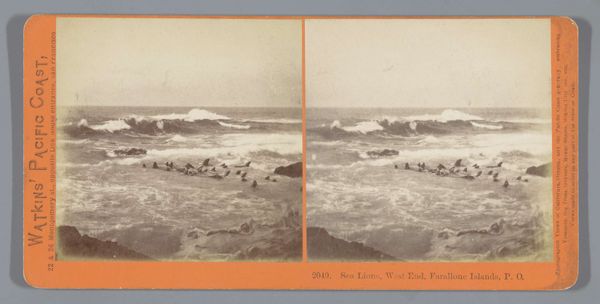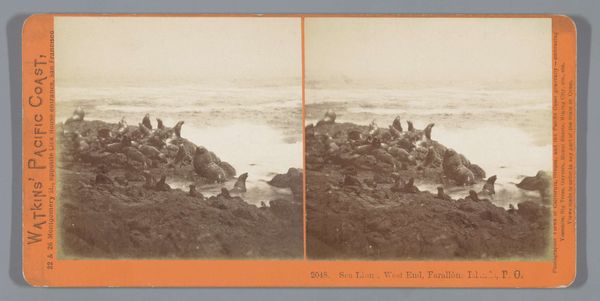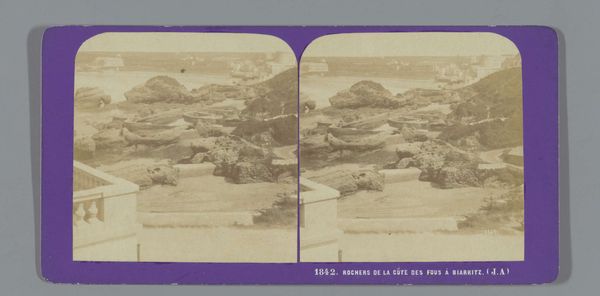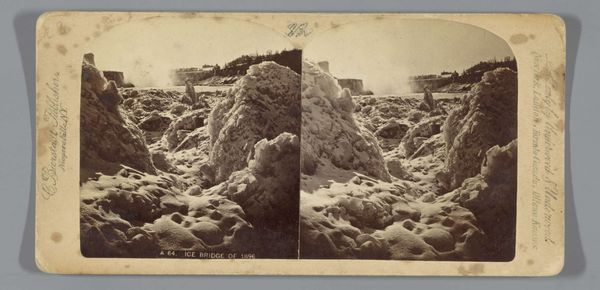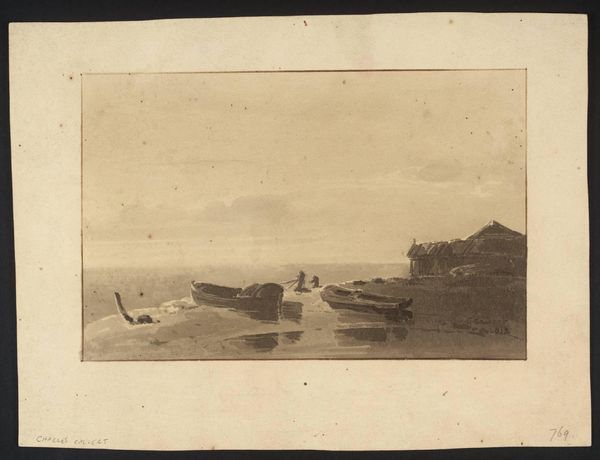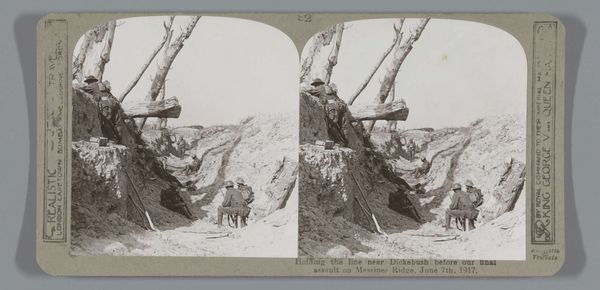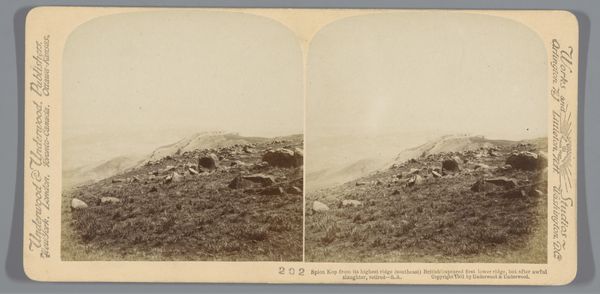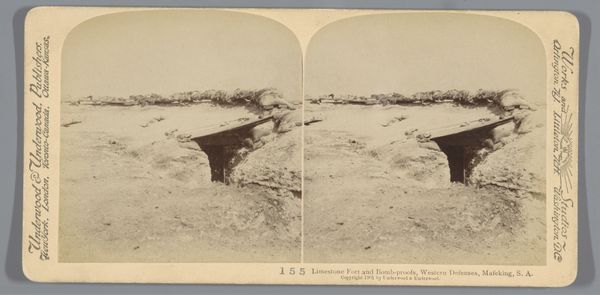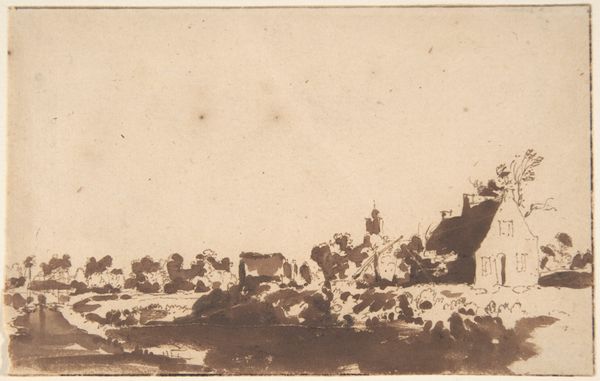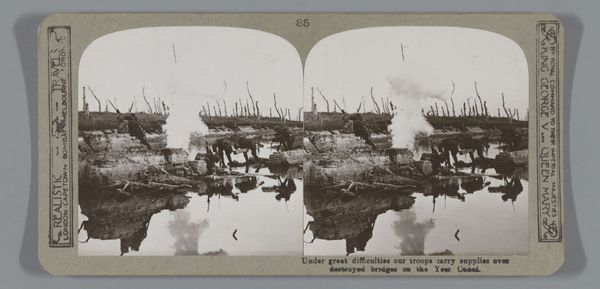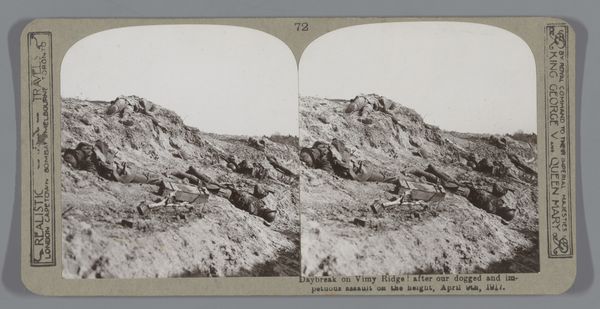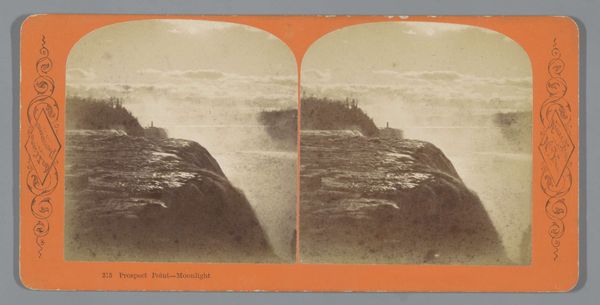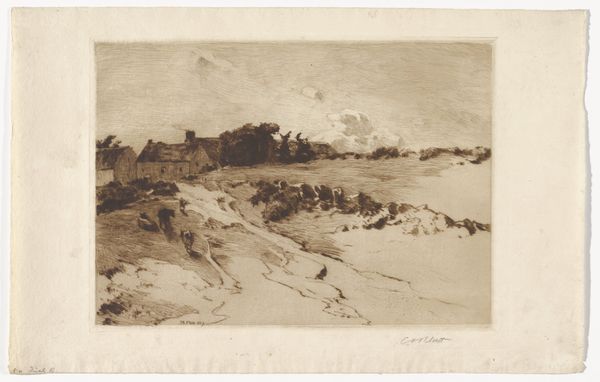
photography, gelatin-silver-print
#
still-life-photography
#
water colours
#
landscape
#
photography
#
coloured pencil
#
gelatin-silver-print
#
realism
Dimensions: height 87 mm, width 177 mm
Copyright: Rijks Museum: Open Domain
Curator: This gelatin-silver print, likely created between 1871 and 1891, is titled "Zeehonden bij de Farallon-eilanden," or "Seals at the Farallon Islands," by Carleton E. Watkins. Editor: The mood strikes me as bleak, almost desolate. The monochromatic tones and dense, crowded scene evoke a sense of overwhelming vulnerability against a seemingly indifferent sea. Curator: Watkins was very invested in documenting the changing American West. The Farallon Islands, just off the coast of San Francisco, were crucial for seal populations but were also subject to significant human impact in the late 19th century. Seal hunting was a big business in that time, so it follows that an image like this provides a specific political context to discuss environmental issues. Editor: Precisely. These seals, huddled together, represent a displaced community. Their exploitation through sealing reflects capitalist structures deeply entwined with early ecological destruction. Are we seeing their strength in numbers, or their demise as commodities? It becomes an examination of power dynamics. Curator: Considering this photograph was also likely reproduced as a stereograph, it speaks to the rise of visual culture, which presented opportunities and posed real challenges for documentary work. Watkins created this during a period of heightened concern over access to natural resources and, inevitably, their limitations. How are we meant to consume images of these diminishing resources? What’s more, Watkins later lost his own archive, making this photo a loaded representation of destruction. Editor: It raises profound questions. The beauty, yes, and what one might call an unblinking look at power that shaped their lives. The commodification of nature extends into how we consume and represent its loss, further entangling ethical considerations and power relationships. Curator: I agree completely. Examining the political and social frameworks is crucial to appreciate and reckon with what the art reveals. Editor: This conversation has added many more layers of complexity to my first impression. Thanks for offering me the additional context, Curator. Curator: Likewise, Editor. Situating it within current discussions—that really allows its depth to emerge.
Comments
No comments
Be the first to comment and join the conversation on the ultimate creative platform.
